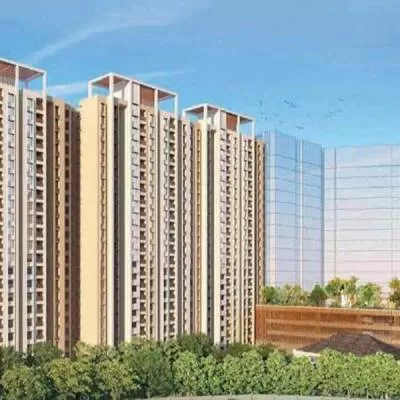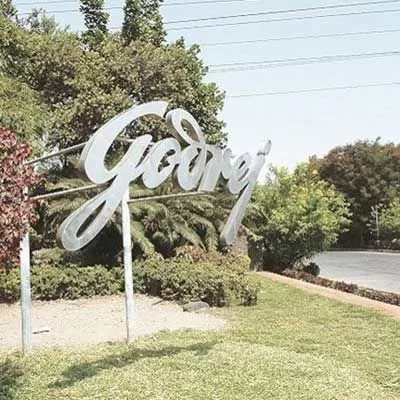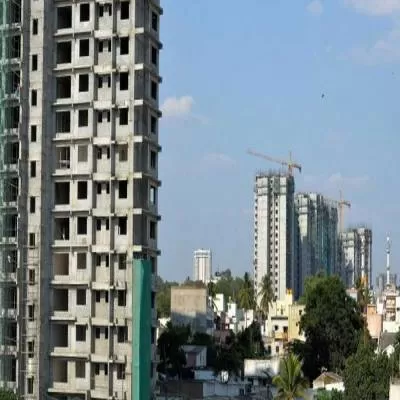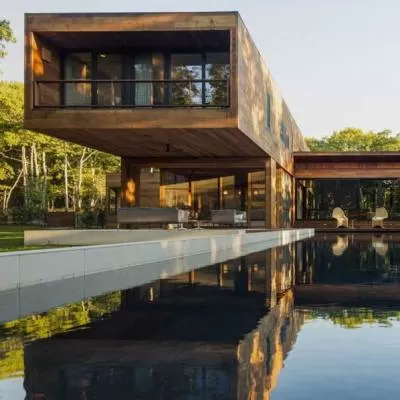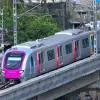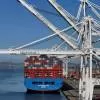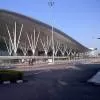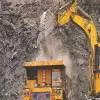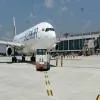- Home
- Real Estate
- We will focus on area-based development, tourism and heritage

We will focus on area-based development, tourism and heritage
Regarded as the spiritual capital of India, Varanasi is known for its incredible number of 84 ghats or embankments, making tourism one of the city´s most important industries. In fact, as part of the Project Infrastructure Development for Destination and Circuits (PIDDC) Scheme, Rs 18.23 crore had been sanctioned by the Centre for basic tourist facilities on the main ghats of Varanasi. Of this, Rs 3.12 crore has been allocated and handed over to the Varanasi Municipal Corporation (VMC) for implementation. Varanasi has been selected for the government´s Smart Cities mission, with city e-governance and quick urban mobility being the two priorities for ICT-based pan-city solutions. Srihari Pratap Shahi, Municipal Commissioner, Nagar Nigam Varanasi, shares more in conversation with SERAPHINA D´SOUZA.
Tell us about the developments and projects under the smart city plan.
The smart cities project is worth Rs 2,520 crore, which includes an investment of around Rs 600 crore for pan-city initiatives and around Rs 1,800 crore-Rs 1,900 crore for area-based development (ABD). The pan-city components include e-governance and an integrated traffic management system (ITMS). Under ABD, we have taken up almost around 1,300 acre along the Ganga ghats at old Kashi (now Benares), which is the oldest part of the city and the centre for tourists and pilgrims. Our aim is to first facilitate transportation. An ongoing project is underground cabling of electric wiring of almost 8 x 2 sq km, which includes this ABD area under the integrated power development scheme (IPDS). Another component is road improvement and facade improvement. Almost 34 roads are being constructed and facade improvement along major roads is being done. In some areas, the project is nearing completion. A third major ongoing component is heritage street pole lighting in these areas with an investment of around Rs 25 crore; the tenders have been released.
Another intervention is that we have 86 premises of heritage importance in the area to develop basic urban facilities, such as constructing roads, signage, toilets, facade lighting, etc. Developing buildings with heritage importance is another aspect. So overall, we will focus on development of the area, facilitation for tourism and heritage, and development of several heritage buildings. For the cleanliness of the ghats as well as the ABD, we have already engaged IL&FS and work is ongoing. Other components include the development and strengthening of the ghats. The 7-km ghats constructed along the Ganga have become weak owing to the force of the river and need rejuvenation.
Tell us about the plans for rejuvenation and basic tourist facilities on the ghats.
Under the PRASAD scheme, work is ongoing for tourism. Some work is related to the ghats and some for the other part of the city not included in the ABD. Rejuvenation and strengthening of these 84 ghats is being undertaken by Engineers India Limited (EIL); it is a Rs 200 crore-Rs 300 crore project. The other aspect is facilitating pilgrims for bathing in the Ganga by installing jetties. Also, considering Benares was declared as the City of Music by UNESCO last year, we plan to develop a heritage music walk in the city and Kashi Kala dham.
What are your plans for safety and security infrastructure?
Our smart city SPV has been registered in October last year, and we are now floating a tender for our PMC. We will first speed up the selection process for the PMC. Until the PMC is selected, we will engage NBCC as the PMC. Once the PMC starts working, we will focus on safety and security. On the state level, CCTV cameras and other components are covered under the ITMS. We are working in close coordination with the state government for this, but it is still at a conceptual stage. Tell us about the city´s plans under Housing for All and its contribution towards the Swachh Bharat Abhiyan.
We have identified 45,000 beneficiaries under the Housing for All scheme and sent this to the state for financing and further processing to MoUD. In January 2017, the Swachh Sarvekshan is being held - this will become a part of the smart city. The city´s waste processing plant at Karsara had not been operational for the past six years. Now, we have resolved the issue and the plant has commenced operations for processing waste at full capacity, ie, about 600 tonne per day, on a temporary basis. We did this with the help of NTPC while the plant is run by IL&FS. We are also in the process of establishing 10 decentralised waste-to-energy plants in different locations of the city. One of these, in Bhavani Pukhri, started functioning last month.
What about projects being developed under JNNURM and AMRUT?
There are three components under JNNURM in the city; one is for solid waste management, for which the Karsara plant is established as mentioned. Then, under AMRUT, work is under process to build a water treatment plant. This has been delayed owing to litigation on the land. We are also constructing a sewage treatment plant (STP), which is also in the processing stage. We expect this STP, being done by L&T, to become fully functional by June 2017. Besides this, we have another STP project funded by the Japan International Cooperation Agency (JICA).
What are the current developments in the improvement of waterways?
There are eight water bodies or ponds in the ABD in the smart city plan, which we are planning to develop, but this is at the initial stage. We will first have to choose technologies for water purification as well as civil development around the ponds, after which we will prepare a DPR and float tenders. And, Varanasi has many wells, and we are taking these wells to the water bodies as a medium of recharging ground water level. Another project is riverfront development for the 11-km Varuna river, which is a state government initiative. With the Varuna front corridor project, we are studying the possibility of making waterways in the city to reduce the traffic congestion around Varuna and Ganga.
Are there any tenders to be floated in the coming months?
We are working on developing road infrastructure and will float tenders for road construction projects for development of the ghats. Further, we plan to float tenders for projects related to rejuvenation of ponds.
What is the annual budget for the city?
The corporation´s annual budget is around Rs 300 crore.
The main source of income is house, water and sewerage taxes, advertisements, etc. From the Rs 300 crore, we receive around Rs 60 crore per year from our taxes; around Rs 240 crore from the state government under different schemes; and from the Central Government for schemes such as HRIDAY.
What are the challenges you face?
Varanasi or Kashi is the oldest existing city. This is both its strength and weakness, and we have to improve infrastructure. The main challenge is in terms of financing and project implementation. Congestion and non-availability of parking space are hurdles. We have planned to develop 10 parking spaces with an investment of around Rs 300 crore. We will also develop a commercial space.
Nagar Nigam Varanasi
Total city area: 80 sq km
Population: 12 lakh
Year of establishment: 1959
Annual budget: Rs.300 crore
Sm\art city budget: Rs.2,520 crore
To share your views on this city, write in at feedback@ConstructionWorld.in
- Srihari Pratap Shahi, Municipal Commissioner, Nagar Nigam Varanasi Regarded as the spiritual capital of India, Varanasi is known for its incredible number of 84 ghats or embankments, making tourism one of the city´s most important industries. In fact, as part of the Project Infrastructure Development for Destination and Circuits (PIDDC) Scheme, Rs 18.23 crore had been sanctioned by the Centre for basic tourist facilities on the main ghats of Varanasi. Of this, Rs 3.12 crore has been allocated and handed over to the Varanasi Municipal Corporation (VMC) for implementation. Varanasi has been selected for the government´s Smart Cities mission, with city e-governance and quick urban mobility being the two priorities for ICT-based pan-city solutions. Srihari Pratap Shahi, Municipal Commissioner, Nagar Nigam Varanasi, shares more in conversation with SERAPHINA D´SOUZA. Tell us about the developments and projects under the smart city plan. The smart cities project is worth Rs 2,520 crore, which includes an investment of around Rs 600 crore for pan-city initiatives and around Rs 1,800 crore-Rs 1,900 crore for area-based development (ABD). The pan-city components include e-governance and an integrated traffic management system (ITMS). Under ABD, we have taken up almost around 1,300 acre along the Ganga ghats at old Kashi (now Benares), which is the oldest part of the city and the centre for tourists and pilgrims. Our aim is to first facilitate transportation. An ongoing project is underground cabling of electric wiring of almost 8 x 2 sq km, which includes this ABD area under the integrated power development scheme (IPDS). Another component is road improvement and facade improvement. Almost 34 roads are being constructed and facade improvement along major roads is being done. In some areas, the project is nearing completion. A third major ongoing component is heritage street pole lighting in these areas with an investment of around Rs 25 crore; the tenders have been released. Another intervention is that we have 86 premises of heritage importance in the area to develop basic urban facilities, such as constructing roads, signage, toilets, facade lighting, etc. Developing buildings with heritage importance is another aspect. So overall, we will focus on development of the area, facilitation for tourism and heritage, and development of several heritage buildings. For the cleanliness of the ghats as well as the ABD, we have already engaged IL&FS and work is ongoing. Other components include the development and strengthening of the ghats. The 7-km ghats constructed along the Ganga have become weak owing to the force of the river and need rejuvenation. Tell us about the plans for rejuvenation and basic tourist facilities on the ghats. Under the PRASAD scheme, work is ongoing for tourism. Some work is related to the ghats and some for the other part of the city not included in the ABD. Rejuvenation and strengthening of these 84 ghats is being undertaken by Engineers India Limited (EIL); it is a Rs 200 crore-Rs 300 crore project. The other aspect is facilitating pilgrims for bathing in the Ganga by installing jetties. Also, considering Benares was declared as the City of Music by UNESCO last year, we plan to develop a heritage music walk in the city and Kashi Kala dham. What are your plans for safety and security infrastructure? Our smart city SPV has been registered in October last year, and we are now floating a tender for our PMC. We will first speed up the selection process for the PMC. Until the PMC is selected, we will engage NBCC as the PMC. Once the PMC starts working, we will focus on safety and security. On the state level, CCTV cameras and other components are covered under the ITMS. We are working in close coordination with the state government for this, but it is still at a conceptual stage. Tell us about the city´s plans under Housing for All and its contribution towards the Swachh Bharat Abhiyan. We have identified 45,000 beneficiaries under the Housing for All scheme and sent this to the state for financing and further processing to MoUD. In January 2017, the Swachh Sarvekshan is being held - this will become a part of the smart city. The city´s waste processing plant at Karsara had not been operational for the past six years. Now, we have resolved the issue and the plant has commenced operations for processing waste at full capacity, ie, about 600 tonne per day, on a temporary basis. We did this with the help of NTPC while the plant is run by IL&FS. We are also in the process of establishing 10 decentralised waste-to-energy plants in different locations of the city. One of these, in Bhavani Pukhri, started functioning last month. What about projects being developed under JNNURM and AMRUT? There are three components under JNNURM in the city; one is for solid waste management, for which the Karsara plant is established as mentioned. Then, under AMRUT, work is under process to build a water treatment plant. This has been delayed owing to litigation on the land. We are also constructing a sewage treatment plant (STP), which is also in the processing stage. We expect this STP, being done by L&T, to become fully functional by June 2017. Besides this, we have another STP project funded by the Japan International Cooperation Agency (JICA). What are the current developments in the improvement of waterways? There are eight water bodies or ponds in the ABD in the smart city plan, which we are planning to develop, but this is at the initial stage. We will first have to choose technologies for water purification as well as civil development around the ponds, after which we will prepare a DPR and float tenders. And, Varanasi has many wells, and we are taking these wells to the water bodies as a medium of recharging ground water level. Another project is riverfront development for the 11-km Varuna river, which is a state government initiative. With the Varuna front corridor project, we are studying the possibility of making waterways in the city to reduce the traffic congestion around Varuna and Ganga. Are there any tenders to be floated in the coming months? We are working on developing road infrastructure and will float tenders for road construction projects for development of the ghats. Further, we plan to float tenders for projects related to rejuvenation of ponds. What is the annual budget for the city? The corporation´s annual budget is around Rs 300 crore. The main source of income is house, water and sewerage taxes, advertisements, etc. From the Rs 300 crore, we receive around Rs 60 crore per year from our taxes; around Rs 240 crore from the state government under different schemes; and from the Central Government for schemes such as HRIDAY. What are the challenges you face? Varanasi or Kashi is the oldest existing city. This is both its strength and weakness, and we have to improve infrastructure. The main challenge is in terms of financing and project implementation. Congestion and non-availability of parking space are hurdles. We have planned to develop 10 parking spaces with an investment of around Rs 300 crore. We will also develop a commercial space. Nagar Nigam Varanasi Total city area: 80 sq km Population: 12 lakh Year of establishment: 1959 Annual budget: Rs.300 crore Sm\art city budget: Rs.2,520 crore To share your views on this city, write in at feedback@ConstructionWorld.in


